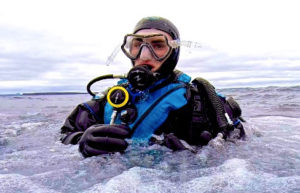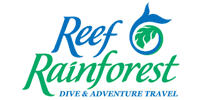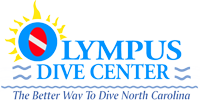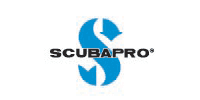About | The 1960s
Since that modest start back in 1955, the Boston Sea Rovers have continuously produced a weekend of education and entertainment, making us the proud sponsors of the longest running underwater dive show in the world.

Captain Cousteau is shown during an impromptu visit with Peter Gimbel just after his daytime presentation.
Throughout the 1960’s, diving science and technology were progressing at a blinding pace, and it seemed like all of the important breakthroughs and discoveries throughout the underwater world were introduced first at a Sea Rover Clinic. Dr. George Bond, the scientist who “invented and developed” the concept of saturation diving, first talked to civilians about his fantastic ideas at a Sea Rovers Clinic. Jacques Cousteau first met Dr. Bond in Boston, and learned of his saturation diving experiments, and event that changed the world of diving. In a few years, habitat projects such as ConShelf, Man-in-the-Sea, and SeaLab would be front page news – but news that had broke first at a Clinic. For the remainder of the decade, and well into the 1970’s, leaders and designers of habitats and saturation projects throughout the world came to Boston to see, learn, and meet people at the Clinic. Science and technology were but one of the major attractions of a Clinic, as every other aspect of diving and the ocean world were also covered with typical Rover finesse. Underwater photographers and cinematographers have premiered more works at Sea Rover Clinics over the years than at any other dive show, and many of these image makers were themselves introduced to the diving public through the Rovers. This description of the 1966 evening show was typical of the events throughout the decade.
“The evening program was at the John Hancock Hall where every seat was occupied and the overflow crowd sat on the steps and stood in the rear. Carlton Ray, just returned from the South Pole, showed movies taken of seals under the ice. Commander Scott Carpenter, Astronaut and Aquanaut, showed movies of his sojourn in Sealab II for 30 days. Captain Walter Mazzone, U.S. Navy, described the physiological problems of Sealab II. Peter Gimbel showed a fascinating twelve-minute shark movie taken in the open sea off Montauk Point, Long Island, NY. Cousteau stayed for the day and evening programs. As an Honorary Sea Rover he made the announcement of the Richard Irvine fellowship in oceanographic research amounting to $500 which the Rovers were awarding for the first time. This was named in honor of our permanent treasurer. Cousteau, to everyone’s surprise, topped the offer by adding the announcement that if the recipient chose to do his work in Monaco, he would add another $500 to the award. The applause was loud.” (Feinberg)
The footage shown by Peter Gimbel would be the spark that began his world wide journey to document the great white shark, culminating in the classic film, “Blue Water, White Death”.
















